By Vedic Astro-Palmist Guylaine Vallée
Myth: A short life line means a short life.
Fact: Not necessarily…
People often associate the life line with how long they are going to live. The truth is, the life line has more to do with the quality of our life than with the number of years we live. It reflects our motivation to lead a long, healthy and happy life.
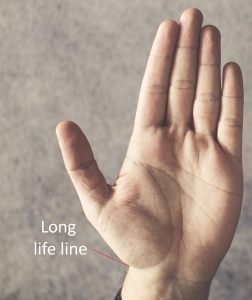 The length of the life line is something everybody wants to know about because everybody thinks it will tell them how long they will live. What I can tell by looking at a life line is how a person is living their life—and that can determine how long they’ll live.
The length of the life line is something everybody wants to know about because everybody thinks it will tell them how long they will live. What I can tell by looking at a life line is how a person is living their life—and that can determine how long they’ll live.
The ideal life line encircles the Mount of Venus. A long life line suggests we will live a long life because we love being alive and want to live as long as possible to accomplish all the goals we have set for ourselves. A long, deep and unbroken life line also tells us that we are doing everything we can to be healthy in both body and mind because being physically and mentally fit gives us the longevity we need to enjoy life to the maximum while fulfilling our dreams.
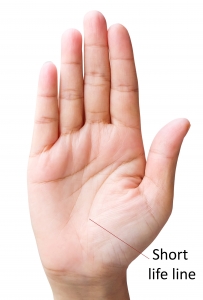 Please keep in mind that a long life line doesn’t mean our life is always going to be a bed of roses. Like everyone, we will likely face our share of challenges, hardships and tragedies. But because we find meaning and purpose in life, we have strong convictions and a belief system that will get us through tough times.
Please keep in mind that a long life line doesn’t mean our life is always going to be a bed of roses. Like everyone, we will likely face our share of challenges, hardships and tragedies. But because we find meaning and purpose in life, we have strong convictions and a belief system that will get us through tough times.
On the other hand, a short life line often suggests we need to try a little bit harder to envision all the wonderful things we can accomplish by living a long life. It could be we are not taking advantage of the opportunities life has to offer us.
The best thing about the life line is that, with a small change in attitude, we can grow it longer! Neuroscience is just starting to catch up with what the Yogis of ancient India knew to be true eons ago, that the brain is capable of growth and change at any age! We have thousands of handprints that verify when you change your thoughts and behavior, your life changes . . . and so does your life line. So don’t worry if you have a short life line – you can always make it longer and stronger, which is exactly what our client Sabrina did!
Sabrina: Building a New Life
Take a look at the differences in Sabrina’s life line in her “before” and “after” handprints. The “before” print was taken right after the breakup of her marriage. She was an emotional wreck and thought she would never be happy again. Her hopelessness and despair are reflected in her short, shallow and broken life line.
Ghanshyam encouraged Sabrina to begin a regular meditation practice to strengthen her focus and concentration in order to develop her destiny line. Why? Because a strong destiny line would provide her with both a long-range vision and a positive outlet to channel the passion of her emotions.
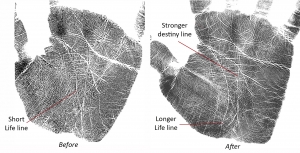 In her “after” handprint taken a couple of years after her initial consultation, we can see that Sabrina’s life line has not only grown, but is much stronger, deeper and more defined. This reveals a renewed passion for life. She has made a conscious decision not to let her sadness defeat her. She embraced her independence and began a new career. She was happy and content within herself and looking forward to one day falling in love again.
In her “after” handprint taken a couple of years after her initial consultation, we can see that Sabrina’s life line has not only grown, but is much stronger, deeper and more defined. This reveals a renewed passion for life. She has made a conscious decision not to let her sadness defeat her. She embraced her independence and began a new career. She was happy and content within herself and looking forward to one day falling in love again.
The moral of Sabrina’s story is this: When we channel our life force positively and appreciate the privilege of being alive, our life line will grow and our life will improve.
AUTHOR
Guylaine Vallée is a teacher and consultant at the Birla Vedic International. In her 36 years as a professional Vedic palmist, she has helped thousands of clients improve their lives and has inspired tens of thousands lecturing across North America and through her many radio and television appearances.
It is not too late to join Guylaine in her weekly webinar:
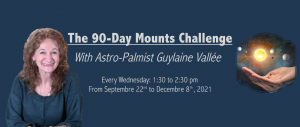 The 90-Day Mounts Challenge:
The 90-Day Mounts Challenge:
Unleashing the Power of the Planets in Your Hands.


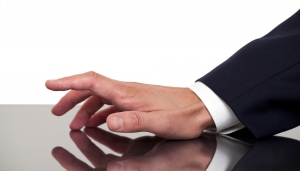


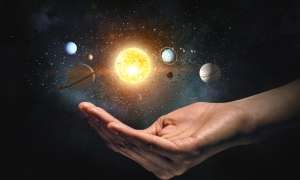
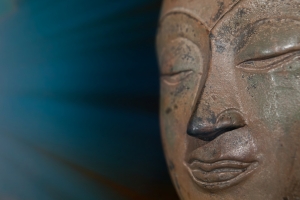


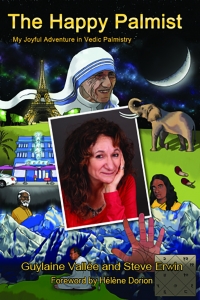
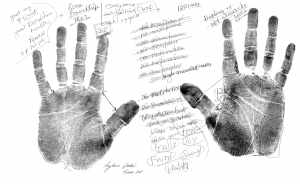
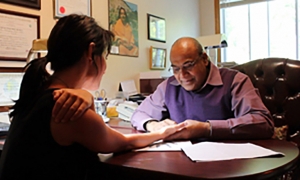

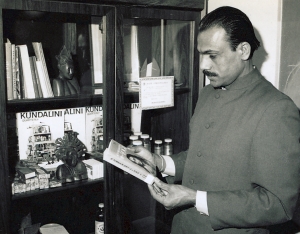
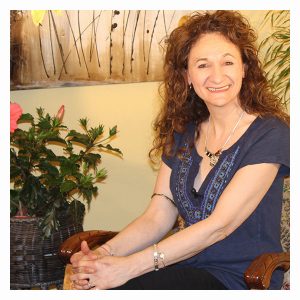

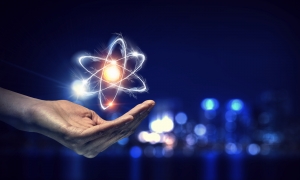

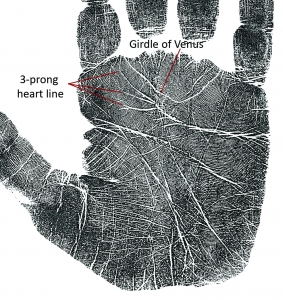

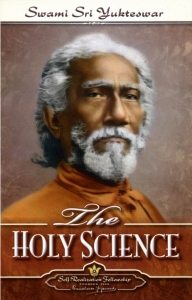
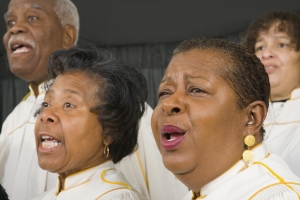




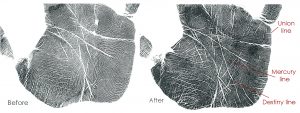

 “Look at this, Charles,” I said, pointing to his Ninth House. “The Ninth house reflects both our good fortune and our relationship with the important teachers and mentors in our lives—beginning with our fathers. Saturn rules your Ninth House and, luckily, Saturn is in Taurus in your First House. This is very auspicious because it brings all the good fortune of the Ninth House into your First House, the house that symbolizes our personality and purpose in life. But Saturn is also the planet that assigns us deep, and sometimes very difficult, spiritual lessons. Because Saturn is in your First House, relating to the Ninth House of father, your chart is telling me that your father has a big role to play in your life, and in your spiritual development.”
“Look at this, Charles,” I said, pointing to his Ninth House. “The Ninth house reflects both our good fortune and our relationship with the important teachers and mentors in our lives—beginning with our fathers. Saturn rules your Ninth House and, luckily, Saturn is in Taurus in your First House. This is very auspicious because it brings all the good fortune of the Ninth House into your First House, the house that symbolizes our personality and purpose in life. But Saturn is also the planet that assigns us deep, and sometimes very difficult, spiritual lessons. Because Saturn is in your First House, relating to the Ninth House of father, your chart is telling me that your father has a big role to play in your life, and in your spiritual development.”
